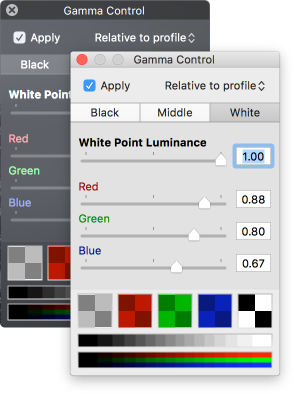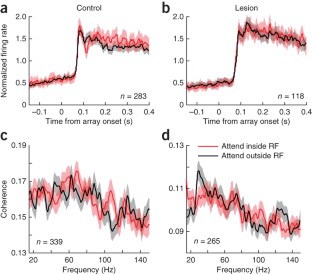
Indeed, anatomical studies have documented projections in the top-down direction that are as numerous as bottom-up projections. These neurophysiological consequences of top-down control must be mediated by corresponding anatomical projections. Correspondingly, neurons in higher visual areas show enhanced firing when processing attended stimuli. For example, when top-down influences pre-allocate attention to specific spatial locations, stimulus processing is more accurate and/or faster.

Many cognitive effects in vision can only be explained by invoking the concept of top-down influences ( Gilbert and Sigman, 2007). These results show that for top-down processes such as spatial attention, elevated top-down beta-band influences directly enhance feedforward stimulus-induced gamma-band processing, leading to enhancement of the selected stimulus. We evaluate this hypothesis determining that beta-band top-down influences from parietal area 7a to visual area V1 are correlated with bottom-up gamma frequency influences from V1 to area V4, in a spatially specific manner, and that this correlation is maximal when top-down activity precedes bottom-up activity. This arrangement inspires an attractive hypothesis, which posits that top-down beta-band influences directly modulate bottom-up gamma band influences via cross-frequency interaction. SIGNIFICANCE STATEMENT Contemporary research indicates that the alpha-beta frequency band underlies top-down control, whereas the gamma-band mediates bottom-up stimulus processing. We propose that this cross-frequency interaction mechanistically subserves the attentional control of stimulus selection. This enhancement was spatially specific and largest when beta-band activity preceded gamma-band activity by ∼0.1 s, suggesting a causal effect of top-down processes on bottom-up processes. Top-down 7a-to-V1 beta-band influences enhanced visually driven V1-to-V4 gamma-band influences. To test this possibility, we investigated Granger-causal influences among awake macaque primary visual area V1, higher visual area V4, and parietal control area 7a during attentional task performance. These processes may implement top-down control of stimulus processing if top-down and bottom-up mediating rhythms are coupled via cross-frequency interaction. In conclusion, radiation only 4 Krad inhibited ginger sprout and did not decrease ginger weight (P<.01).Several recent studies have demonstrated that the bottom-up signaling of a visual stimulus is subserved by interareal gamma-band synchronization, whereas top-down influences are mediated by alpha-beta band synchronization. However, non-irradiated ginger sprouted 1.5 cm but no sprout was found in irradiated ginger. In addition, water contents were found to be highest in non-irradiated ginger (76.00%) but lowest in irradiated ginger, at 10 Krad (66,66%). The weight loss of non-irradiated ginger stored at 20 deg C for 6 months was lower than those irradiated ginger, i.e. No sprout also, was found in 4-10 Krad ginger. Weight loss after three month storage of irradiated 0, 4, 6 and 10 Krad ginger increased to 36.37, 32.67, 34.95 and 35.95% respectively, and the water contents decreased to 69.33, 72.00, 73.33 and 70.66% respectively.

Only non-irradiated ginger sprouted 1 cm. The results of the experiment are as follows: after 1 month storage at 32 deg C both irradiated and non-irradiated ginger weight losses were 15-18% and water contents decreased from 88.67 to 81.82%. Ginger (Zingiber officinale L.) preservation was conducted by irradiated ginger at 0 (control), 4, 6 and 10 Krad and then stored at 20(+-1) deg C and room temperature (32+-3 deg C) with 75% relative humidity.


 0 kommentar(er)
0 kommentar(er)
